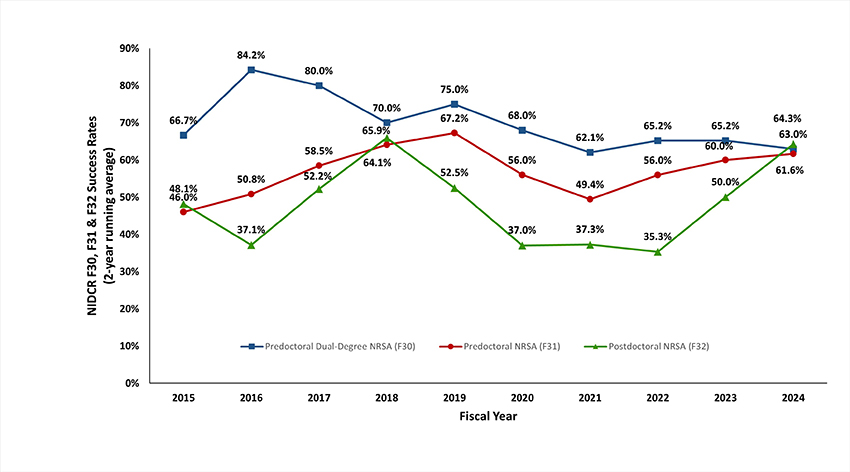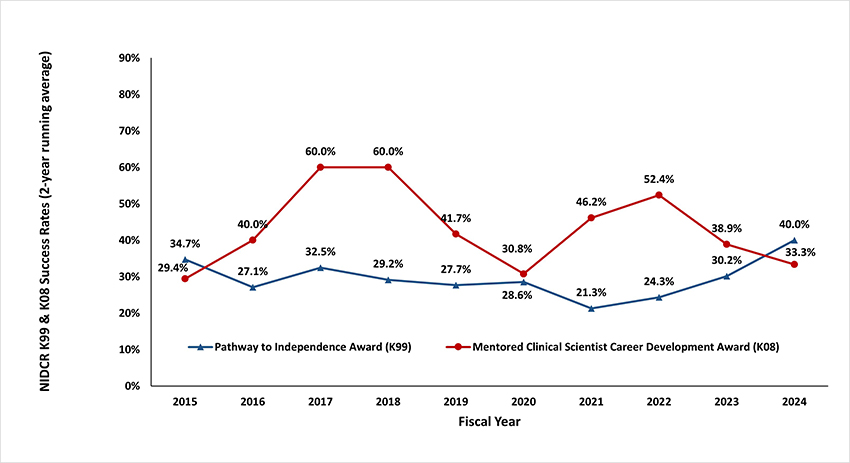Fellowship & Career Development Application Success Rates
Select Individual Fellowship, Research Career Development, and Research Career Transition Application Success Rates
NIH uses success rates as a metric for describing the likelihood of an application getting funded. Success rate is defined as the number of awards divided by the number of unique applications in a fiscal year. For more information on NIH success rates, please visit the NIH Research Portfolio Online Reporting Tools (RePORT) Success Rates webpage.
NIH has many programs to help prepare individuals for careers in biomedical, behavioral, social science, and clinical research. The NIH Office of Extramural Research’s Research Training and Career Development website and NIDCR’s Careers & Training section provide information on the types of programs and how to apply. Here we provide NIDCR success rates for the Individual Predoctoral Dual-Degree Fellowship (F30), Individual Predoctoral Fellowship (F31), the Individual Postdoctoral Fellowship (F32), the Mentored Clinical Research Career Development Award (K08), and the career transition Pathway to Independence Award (K99/R00). For a full listing of NIDCR-supported research training and career development programs, see NIDCR’s Careers & Training section. For NIDCR success rates of each funding activity see the NIH RePORT database.
NIDCR F30, F31, and F32 (NRSA) Success Rates
NIDCR K99/R00 and K08 Success Rates
August 2025


